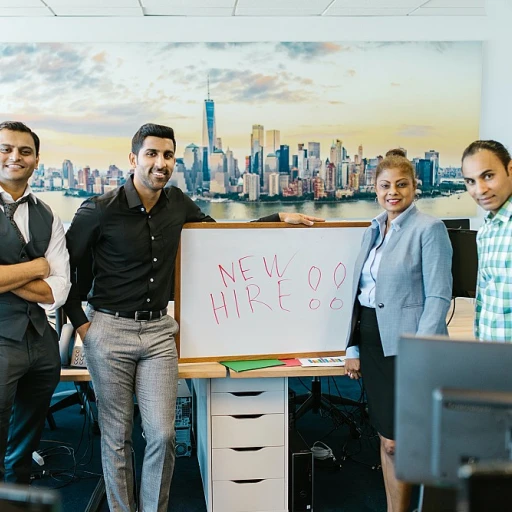Understanding Inorganic Growth Strategies
Exploring Non-Traditional Growth Approaches
In the world of business, growth is a critical objective, and leaders often grapple with different strategies to achieve it. One such strategy is inorganic growth, involving a non-traditional approach focused on expanding beyond the natural development phases like organic growth. Companies utilize inorganic growth when organic growth through traditional means like content marketing, seo, or organic social isn't meeting long-term objectives.
Inorganic growth encompasses activities such as mergers, acquisitions, or leveraging paid media to boost brand presence and reach new audiences swiftly. It's a complement to the traditional growth strategies, and it often requires a strategic marketing strategy that involves paid advertising and other innovative methods.
The integration of paid advertising can rapidly enhance a brand's reach. Unlike organic marketing, which involves more gradual build-up through methods like social media engagement and organic traffic generation, paid marketing allows businesses to target specific audiences and increase their visibility in search engines almost instantly.
When implementing inorganic strategies, leaders have a distinct role. Their involvement ensures that the transition from organic to inorganic practices is seamless, aligning with the organization's broader objectives. Effective leadership in this context requires strategic thinking, focusing not only on immediate gains but also long-term sustainability and growth.
A pivotal article on enhancing leadership through strategic thinking emphasizes the need for leadership in evaluating the potential risks and benefits of inorganic growth strategies. Such insights are crucial as they play a major role in shaping an organization's journey towards achieving its growth goals.
The Importance of Leadership in Inorganic Growth
The Role of Effective Leadership in Driving Inorganic Growth
In the realm of inorganic growth, effective leadership is a critical factor that can make or break a company's success. Leaders are tasked with steering their teams through the complex landscape of paid advertising and other inorganic marketing strategies. Their ability to inspire, strategize, and execute plays a pivotal role in achieving desired outcomes.
Vision and Strategy Alignment
Successful leaders ensure that their vision aligns with the business's marketing strategy. This alignment is crucial for effectively utilizing paid media to enhance the brand's reach and audience engagement. By setting clear goals and communicating them effectively, leaders can guide their teams in implementing ads that resonate with the target audience.
Fostering a Culture of Innovation
Innovation is at the heart of inorganic growth. Leaders who foster a culture of innovation encourage their teams to explore new advertising strategies and digital marketing tactics. This approach not only enhances brand visibility but also drives traffic and lead generation through paid advertising. Embracing change and encouraging experimentation can lead to breakthrough results.
Adaptability and Resilience
The landscape of inorganic marketing is ever-changing, with new social media platforms and search engines emerging regularly. Leaders must be adaptable and resilient, ready to pivot strategies in response to market shifts. This adaptability ensures that the business remains competitive and continues to grow, even in challenging times.
Empowering Teams
Empowering teams is a hallmark of effective leadership. By providing the necessary resources and support, leaders enable their teams to excel in executing paid marketing campaigns. This empowerment fosters a sense of ownership and accountability, leading to more effective inorganic growth strategies.
For more insights on enhancing leadership skills, consider exploring goal-oriented training as a valuable resource.
Paid Advertising: A Key Component
Reaching New Heights with Paid Advertising
Paid advertising is a formidable tool in the realm of inorganic growth, acting as a strategic cornerstone for businesses aiming to expand their marketing reach and engage specific audiences. While organic methods, such as SEO and content marketing, are invaluable for long-term growth, incorporating paid media helps to accelerate visibility and traffic — especially in competitive landscapes. Businesses can harness the power of paid advertising in several strategic ways:- Targeted Reach: Platforms like paid social media and Google Ads allow brands to zero in on precise demographics, tailoring messages to resonate with the intended audience.
- Rapid Visibility: Unlike organic growth strategies, paid ads offer immediate exposure, ensuring that a brand’s message reaches a wide audience swiftly, essential for brands launching new products or services.
- Measurable Results: Through detailed analytics, brands can access real-time data, assessing performance and optimizing campaigns to maximize return on advertising spend.
- Enhanced Brand Recognition: With consistent exposure, paid marketing boosts brand awareness, creating familiarity with the audience, which can complement organic social efforts.
Challenges in Managing Inorganic Growth
Navigating the Hurdles of Inorganic Expansion
In the realm of inorganic growth strategies, embracing paid advertising as a tool for expansion requires a nuanced approach that considers various challenges. Businesses aiming for inorganic growth through channels such as digital marketing must be cognizant of the hurdles inherent in this path.
One prominent challenge is the ability to effectively integrate paid tactics with existing organic strategies. This integration requires a meticulous balance between utilizing paid media and maintaining an organic presence across platforms. The synergy between these strategies is crucial, as it can significantly impact the overall marketing strategy and brand positioning.
Another hurdle is allocating resources wisely for paid advertising. Deciding on budget allocation for ads while ensuring that there is room for content marketing can be complex. With numerous channels available, including social media, search engines, and others, determining the right mix to target the ideal audience can be a daunting task.
Additionally, the rapidly changing landscape of digital marketing presents a persistent challenge. Constant algorithm changes by platforms, particularly those engaged in paid social and organic social media, mean strategies need regular updates to stay effective. Without adapting to these changes, businesses risk reduced visibility and diminishing returns from both paid and organic traffic.
Moreover, as with any investment, there's an inherent risk that not all efforts will yield expected results. Determining the return on investment for inorganic marketing endeavors involves precise measurement techniques and performance analytics. Companies must develop robust tracking systems to gauge the success of their strategies in driving growth and traffic.
In conclusion, while inorganic growth via paid marketing provides lucrative opportunities for expanding reach, leaders must navigate these challenges with strategic foresight and adaptability to sustain long-term business success.
Best Practices for Leaders
Guidelines for Leaders Navigating Paid Advertising
Effectively managing inorganic growth, especially through paid advertising, requires leaders to adopt certain best practices. Here's how leadership can make a difference:- Define Clear Objectives: Before embarking on any paid marketing campaign, leaders should ensure the business has clear goals. Understanding the primary aim, whether it's increasing traffic, enhancing brand visibility, or generating leads, will guide the advertising strategy.
- Leverage Data-Driven Decisions: Analyze data to tailor campaigns that align with the target audience's preferences. Utilizing insights from search engines and social media analytics helps refine strategies for better reach and engagement.
- Integrate Organic and Paid Efforts: Leaders should focus on harmonizing organic and paid marketing strategies. This synergy not only strengthens brand consistency but also maximizes the overall impact. Paid ads can support organic social efforts by amplifying content reach.
- Monitor and Adapt: Paid advertising demands ongoing monitoring to assess performance and adapt as needed. Leaders must be agile, ready to pivot the strategy based on analytics to ensure continued growth and success.
- Cultivate Team Expertise: Ensure the marketing team undergoes regular training in the latest digital marketing trends. Expertise in search engine optimization and paid marketing tools empowers the team to execute campaigns that effectively drive inorganic growth.
Case Studies: Success Stories
Success Stories in Inorganic Growth
To truly understand the impact of inorganic growth strategies, examining real-world examples can be enlightening. These case studies highlight how businesses have effectively leveraged paid advertising and strategic leadership to achieve remarkable growth.
Case Study 1: A Retail Giant's Leap with Paid Advertising
A prominent retail brand, aiming to expand its market reach, invested heavily in paid advertising. By utilizing targeted ads across various digital platforms, including social media and search engines, the company successfully increased its audience and boosted sales. The key to their success was a well-defined strategy that focused on understanding their target audience and crafting ads that resonated with their needs. This approach not only enhanced their brand visibility but also significantly improved traffic to their online store.
Case Study 2: Tech Startup's Strategic Use of Inorganic Marketing
A tech startup, struggling with limited organic growth, turned to inorganic marketing strategies to gain a competitive edge. By integrating paid social and search ads into their marketing strategy, they managed to accelerate their growth trajectory. The leadership team played a crucial role in this transformation by fostering a culture of innovation and adaptability, allowing the company to quickly respond to market changes and refine their advertising strategies.
Case Study 3: Media Company Enhancing Reach through Paid Media
A media company, known for its content marketing prowess, sought to expand its audience base beyond organic social channels. By investing in paid media campaigns, they reached new demographics and increased their content's visibility. This strategic move was supported by leadership that emphasized data-driven decision-making, ensuring that each advertising dollar was spent effectively to maximize reach and engagement.
These success stories underscore the importance of strategic leadership in managing inorganic growth. By embracing paid advertising and maintaining a clear focus on long-term goals, businesses can navigate the challenges of inorganic growth and achieve sustainable success.







